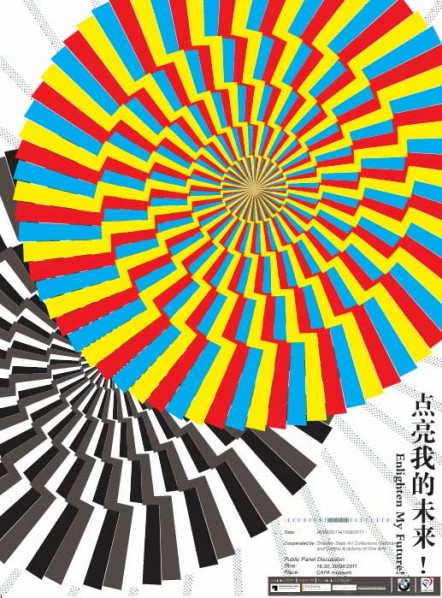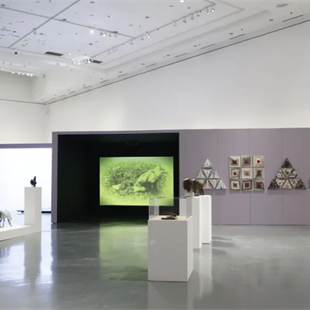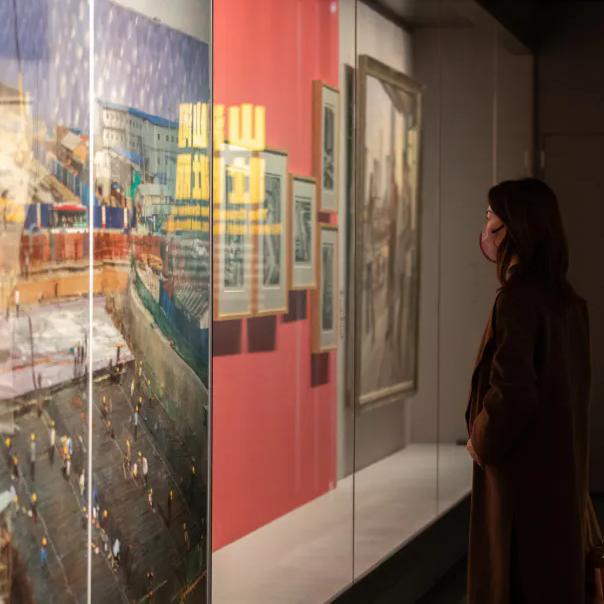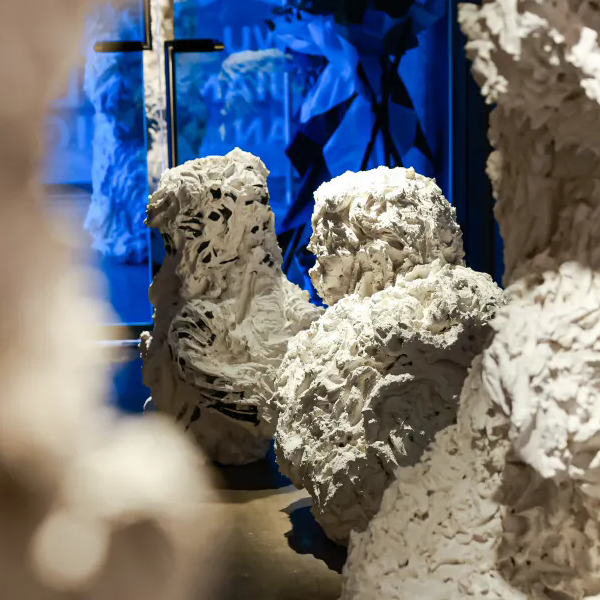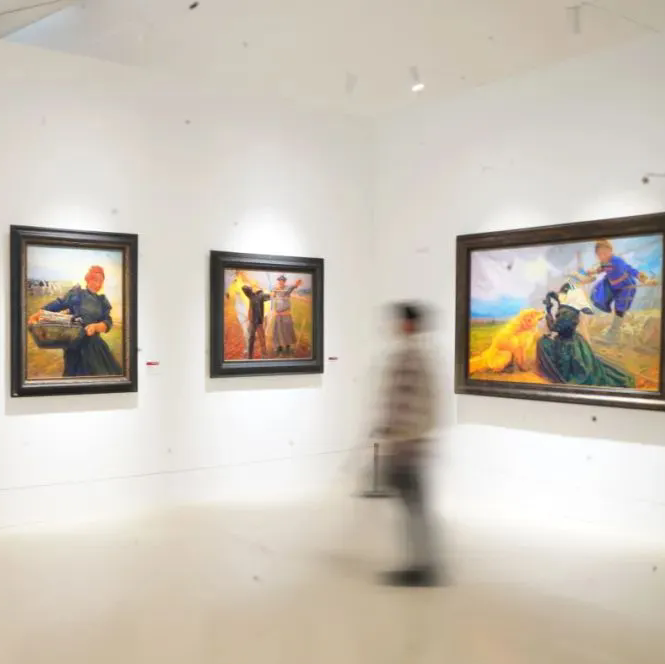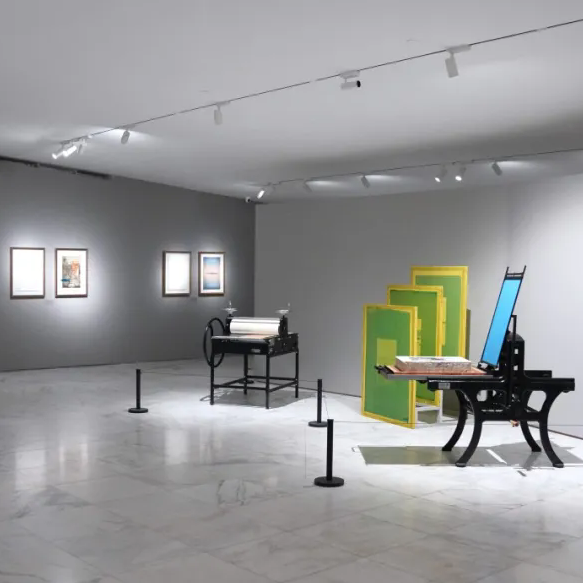Background
The idea of a congress in Beijing originates in the first youth congress “Culture! My Future” that was held during the 450th anniversary of the Dresden State Art Collections in April 2010. On this occasion, 30 young people from Turkey, Czech Republic, Poland, Russia, Spain, France, China and Germany met, to formulate their own personal expectations of culture and museums. The claim “Shorten Distances” summarizes the ten main theses formulated by the group in an agenda, which was presented at the end of the congress to the Prime Minister of Saxony, Stanislaw Tillich. The aim of the conference in Beijing is to continue and strengthen this international dialogue.
Concept
Youth Congress
“The Art of the Enlightenment” is the first international exhibition shown at the newly renovated National Museum of China, Beijing. The Dresden State Art Collections, the Berlin State Museums, the Bavarian State Painting Collections Munich and the China Central Academy of Fine Arts would like to seize this opportunity and invite young people from China, Germany and other countries to talk about the role of the arts and museums in a globalized world full of intercultural references. From August 26th to September 1st 2011 about 30 young people between 16 and 20 met in Beijing for discussions and workshops.
The international youth congress “Enlighten my future!” aims to expand the focus and direct the view to the future relationships between cultural institutions and society. The congress provides a context within which the values of museums both implicit and explicit can be explored. As a further step, new ideas for international museum work will be developed and presented.

Young People have visited "The Art of the Enlightenment" at the National Museum of China, Beijing
Summary of Main Discussions and the Final Presentation
Main discussion after visiting the exhibition The Art of Enlightenment
The group of the youth congress visited the exhibition The Art of Enlightenment in National Museum of China. Youngsters from Western and Eastern countries are all impressed by the exhibition. Guided by the following questions, the youth discussed about the ideas they took from the exhibition.
I. What was surprising to you when you visited the exhibition? What aspect did strike you most?
Sciences: They conveyed an idea of how science developed in that time and how much people were interested in research.
One surprising aspect was that some of the instruments are still used today which shows how far developed the society in the 18th century has been.
Way of reasoning: Religious explanations of the world are challenged by new ways of thinking and the development of new scientific disciplines and methods.
Humanity: Enlightenment was accompanied by emotion and sensibility which was shown in various paintings and the expressions of the portrayed people.
Human beings become the center of interest.
II. What did you take from the exhibition?
Cultural differences:
Eastern philosophical thinking is primarily focused on the way humans can lead a moral life; practice and theory about life cannot be separated from each other; the guiding principle is harmony => leading to the question: how?
Western philosophical thinking is primarily focused on the meaning of life; practice and theory were often separated from each other; the guiding principle is to find a truth => leading question: why?
It is important to know about the past in order to be inspired for the future.
Different aspects and concerns of enlightenment (for example the importance of nature and upcoming self-awareness of the individual etc.) are still valid today.
Communication and cultural exchange are important in order to understand different societies and their traditions.
The comparison of two cultures helps to improve the understanding of each society
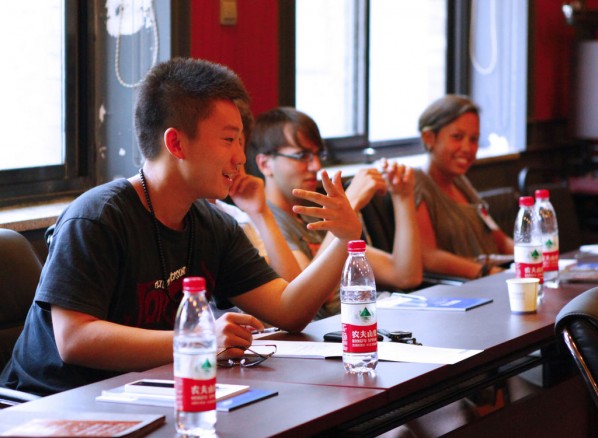
Talk About Your Idea During the Discussions
III. What is an enlightening museum?
An enlightening museum is one in which you can observe aesthetic artifacts and at the same time you are being educated.
An enlightening museum is one in which visitors can interact with the displayed objects.
An enlightening museum is one which makes people develop their own idea.
IV.What is art?
Art is something you see in an object; art is created by an observer.
Art is what you feel and think.
Art is both an aesthetic object and a means to educate people.
Art is oppositional to nature.
An art object is something on which special attention is drawn to.
The definition of what is art depends on a context.
Art is a communicative process between an artist and an observer.
=> to the question:
Is an artistic intention necessary to define something as art?
V. What is a museum?
A museum is an institution where history can be preserved.
It is a place where art is being collected and displayed.
It is a place where detailed information can be given on a specialized topic.
It has to be open for the public.
It is an institution that is doing research.

Talk About Your Idea During the Discussions 02
VI. What role does a museum play in society?
India:
Museums are considered as important institutions
Most of them are based on a British model
There is a recent flow in India: new museums are being built and opened up
However, many museums are still not in proper condition
A lot of historical museums exist
There are usually easy to access
People in general are really interested in museum; it is a place of education
Germany:
Museum are considered to be very important for preserving culture
General agreement that museums are a precious institution
There exist a variety of museums: historical, scientific, art etc.
There are easy to access
Attention is paid to young people
Museums usually offer a lot additional programs alongside exhibitions (workshops, lectures etc.)

Discussions at the International Youth Congress
Russia:
Different kinds of museums are developing at the moment
Focus is on young people
Modern art is very popular (in Moscow)
Museums are cultural centers including different arts (paintings, sculptures, music)
Museums offer additional programs for children: lectures and seminars; special guided tours for children off all ages
China:
Different types of museums (mostly historical, technical and heritage museums); special facilities for children
Access to museums is sometimes difficult (tickets need to be booked in advance otherwise it will be very expensive)
Schools encourage students to visit museums (school excursions to museums are being organized a lot)
Highly valued artifacts are centered in only a small amount of museums (large, national museums)

Xu Bing Made His Speech at the Beginning
Ⅱ. Group Concepts Presentation
GROUP 1 (as the background of Russia):
LOOK OUT! --- SUPERNATIONALISM & THE POWER OF IMAGES
Nationalism is a permanent theme in education and culture. The power of images leads people into super nationalism. This exhibition concentrates on the propaganda culture and its influence on the public, and calls up awareness to media among the public.
I. Layout: The museum has a certain way of visiting, so that visitors would not miss any of the exhibition rooms. In the main building, there are four Media Station on each corner, and two Discussion Rooms in the centre of the building. One of the specialty is the guides in the museum is a part of exhibition, not only by answering questions raised by visitors, but also plays a role to lead people to the trap of propaganda. In addition, a garden is attached to the main building for related performances.
II. Administrative Plan: The exhibition is shown in Pushkin Museum, Moscow, Russia, with the duration of one to two months. The exhibition opens to the public from 4pm to 9pm on weekdays, 10am to 12pm and 2pm to 9pm on weekends. All students are subsidized for entrance. Languages spoken by guide are Russian for local visitors and English for international visitors.
III. Display Content: The exhibition consists of paintings, poster and bill boards through ages, photographs, statues and flags. Furthermore, Media Station plays short film screenings, recordings of speeches and facts. Street theatre and Nationalist music are performed in the garden.
IV. Discussion Room: Each of the Discussion Rooms contains a certain topic. Room 1 discusses on Mock Propaganda, and Room 2 is in a relaxing Café atmosphere with couches and arm chairs, serving food and beverages. Professionals from all over the world are invited to moderate discussions.
V. Promotion: Maintaining the theme of Propaganda, the exhibition is promoted by distribution of pamphlets, poster, bill boards, hot air balloons, newspaper, television, radio and internet. Also, the promotion group goes to neighborhood to neighborhood verbally asking people to attend the museum events and programs.
VI. Why is the museum enlightening: The museum together with its exhibition calls up the awareness of the problems of society and informs people how easy it is to fall into the trap of propaganda. The museum builds the awareness of the process of Nation building. It helps to realize similarities in terms of identity crisis across the globe, and stimulating discussions to spark off new thoughts.

Students of Group I gave their presentation.
GROUP 2 (as the background of Germany):
THE ART OF EATING --- an exhibition about the different eating habits of China, India and Europe and the development of cutlery
Food can be a theme of art and even the media of art, also art somehow can be food. Why we have so many differences in food and eating habit nowadays across the world? In the beginning of civilization human beings improve their dinning from eating fresh to cooking with fire. Throughout the history, diversities raised up with cultural backgrounds. However, all diversities are somehow connected and point to the same destination.
I. Concept: The idea of the exhibition comes as following:
Bring internationality to Germany: Focusing on smaller, less cosmopolitan towns by creating a moving exhibition
Explain parallels in different cultures by bringing out differences: Avoiding Conflicts; enlightening people about the connection with other cultures
The topic of food and eating habits is common to all cultures
II. Layout: Introduction Room: Introduction of the food culture and eating habit of India, Europe and China, as well as the development of cutlery (e.g. timeline of “From Hands To Chopsticks”)
Culture Room: Depict the development of each tradition (Archeological artifacts, Table setting in the centre, Art tracing historical development, Interactive media console)
III. Food Art: The exhibition aims at showing the meaning of food today (“… not only food as art, but also art as food!”). It also shows different aspects on modern art, hunger and wastage. Visitors will take these questions after visiting, which contributes to enlightenment about the society today.
IV. Promotion: A unique way of promotion is attracting people by serving real food out of the advertising vehicles which shows that is waiting for the visitors in the exhibition.
V. Attractions: One of the specialties of the exhibition is it contains a Cooking Workshops. The workshops are separated for children and for adults organized in the museum kitchen or restaurant. With a theme of the week, visitors may cook and eat traditional food in the workshops.

They were absorbed in the final presentation.
GROUP 3 (as the background of China):
CHINESE CENTRAL MUSEUM
Historical museum is the most common type of museums in China. It conveys the knowledge and information of the glorious pages of the country. Chinese Central Museum is an ideal museum shows basically Chinese culture and its traditions in a vivid context that connect history with other fields. With a design of both the architecture and content, the museum shows best of what is important to enlighten the public.
I. Introduction: The Chinese Central Museum (CCM) is a cultural centre with not only exhibition rooms, but also concert hall and workshops. The museum concentrates on mixed topics of history, technology and fine arts. Located in Beijing, the capital of country, CCM is shaped as the domain of China. Visitor entre the museum from the north of China, and experience the cultural diversities that are shown throughout the country by walking to the south exit.
II. Exhibition: The North and South Dynasty is a exhibition with the background of 420-589AD’s China. The exhibition consists of Chinese traditions, clothing and science during the period, with workshops on topics as music, language and food.
III. Concept: CCM works as a time machine with the clue of Past-Present-Future. The whole museum focuses on the topic by guides in traditional clothing, special food offered in museum restaurant and concert, workshops and programs for children and adults.
IV. Philosophy of enlightenment: CCM aims at offering visitors an interaction by SEE, TRY AND UNDERSTAND.
V. Promotion: Small programs, shows, presentation with few artifacts as part of the great exhibition in CCM are shown in the promotion tour through Beijing and its surrounding cities. In addition, promotion via internet, social network and printing media is also available.

Listen Respectfully at the International Youth Congress
GROUP 4 (as the background of India):
ALL INDIA CULTURE SHOW --- 15 rooms of India
India is a big country with many regions, each of which has its own culture, tradition and belief. It is not rare for an Indian person never knows about the neighbor region. Considering from the lack of intercultural understanding ad education in India, the exhibition All India Culture Show promotes openness of mind of foreigners and the Indian population, as well as calls up the appreciation of differences and specialties of every single region. As well, it presents a common Indian identity and creates interests among the people.
I. Introduction: The exhibition has a Travel- around-concept throughout a region wise presentation. Guides of exhibition come from different regions. Museum shops and restaurants sell traditional products of different areas. It is the very region that decide what to present on herself (e.g. dance, marriage custom, food and religion). The Introduction Room or Room of Unity is the enlightening aspect.
II. Additional Programs: There are workshops and lectures on dancing, cooking, singing and several regional cultural events.
III. Promotion: The idea of promoting to the public is mobile subunits, e.g. advertisement on poster, radio, internet and social networks. Regional events like street theatre are also potential effective ways to spread information.


